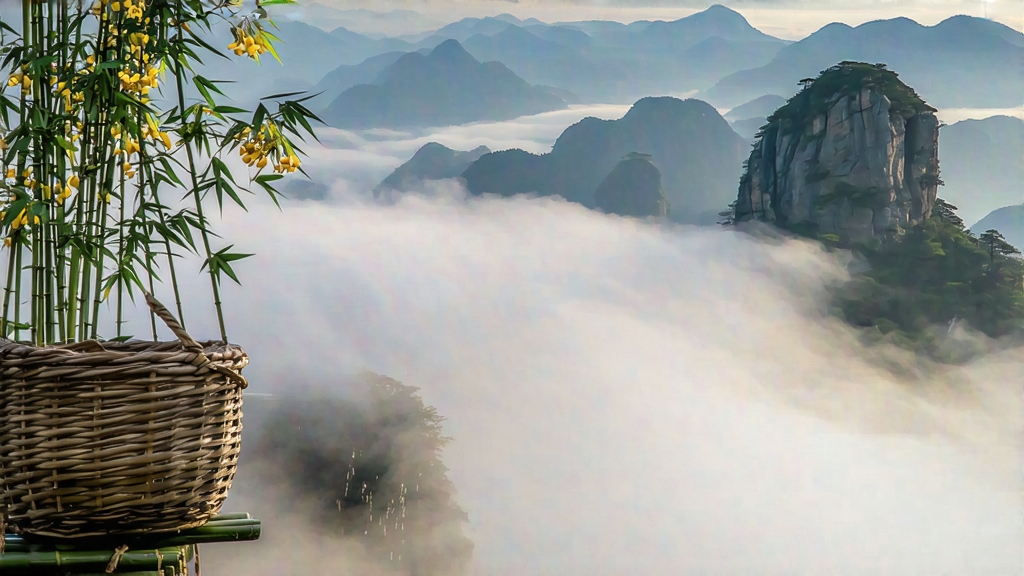
Tucked high in the mist-veiled Dabie Mountains of western Anhui Province, a tea once reserved for emperors still quietly resists the march of time. Huoshan Huangya—literally “Yellow Buds of Huoshan”—is the least-known member of China’s six great tea families, yet its mellow nectar carries the full weight of thirteen centuries of courtly ritual, Daoist pharmacy and mountain folklore. To understand why this leaf was carried by horseback to the Tang palace, why Ming scholars called it “liquid gold,” and why only a handful of villages still possess the patience to make it, one must follow the narrow stone paths that climb from the Huo River valley toward clouds that never quite disperse.
History: from elixir to exile
The first written record appears in 780 CE in Lu Yu’s Classic of Tea, where the sage praises “a yellow shoot from Huoshan, sweet like dew, clearing the eyes and heart.” By the Song dynasty the buds were pressed into cakes and sent south along the Yangtze as tribute; Ming emperors substituted loose leaf but doubled the annual levy, so that every spring 500 picked soldiers escorted sealed bamboo casks to Beijing. The Qing continued the tradition until 1850, when the Taiping rebellion severed the trade route. With the court gone, the farmers turned to easier green teas; the secret of menhuang—“sealed yellowing”—survived only in family notebooks and the memory of one blind monk who guarded the cliff-side Guanyin temple. When Chinese tea scholars “rediscovered” Huoshan Huangya in 1972, they had to reconstruct the process from three incomplete poems and the smell of an old wooden chest.
Terroir: where the mountain breathes through bamboo
Huoshan county lies at 31° N, 800–1,200 m above sea level. The Dabie range traps humid air from the Yangtze plain, creating 280 fog-bound days a year. The soil is a porous yellow granite loam, rich in selenium and cooled at night by mountain springs. Local bamboo (Phyllostachys edulis) releases an aromatic sap that drifts onto tea terraces; farmers insist the bamboo note is what distinguishes authentic Huangya from any attempt to imitate it lower down the slope. Only three villages—Jinjiwu, Foziling and Taiyang—are recognised by the 2007 geographical indication, and even within these micro-zones the leaf must be picked between Qingming and Grain Rain, when each bud still wears its winter down and the spring cicadas have not yet sung.
Raw material: one bud, one leaf, one heartbeat
The plucking standard is fanatic: a single unopened bud pressed against the first unfolding leaf, no longer than 2.5 cm, harvested before ten o’clock so that the dew acts as a natural protective film. Experienced pickers work with thumb and middle finger in a single twisting motion that keeps the tiny stem from oxidising at the break. A full kilogram of fresh leaf contains roughly 12,000 such sets; after firing and drying, the yield shrinks to 180 g—enough for perhaps forty cups. Because the bushes are seed-grown descendants of Tang-era plants rather than cloned cultivars, each tree ripens at its own pace; pickers must zig-zag between terraces, reading the alchemy of sun and shade like vintners in Burgundy.
Craft: the art of letting the leaf suffocate gently
Yellow tea’s defining step is menhuang, a controlled re-fermentation that borrows from both green and black protocols yet belongs to neither. Within two hours of plucking, the leaf is spread on bamboo trays and wilted for 90 minutes at 28 °C to reduce moisture to 65 %. A quick shaqing—literally “killing the green”—follows in iron woks heated to 160 °C, but the hand-to-leaf contact lasts only three minutes, enough to denature polyphenol oxidase without driving off all the green fragrance. While green tea would now be rolled and dried, Huangya is instead piled: 3 kg are wrapped in steamed cotton cloth and placed inside a cedar box lined with bamboo leaves. The box is slid into a dim corridor where temperature is held at 30 °C and humidity at 75 %. For the next 48 hours the leaf “suffocates,” turning from jade to pale gold as residual enzymes convert chlorophyll into pheophytin